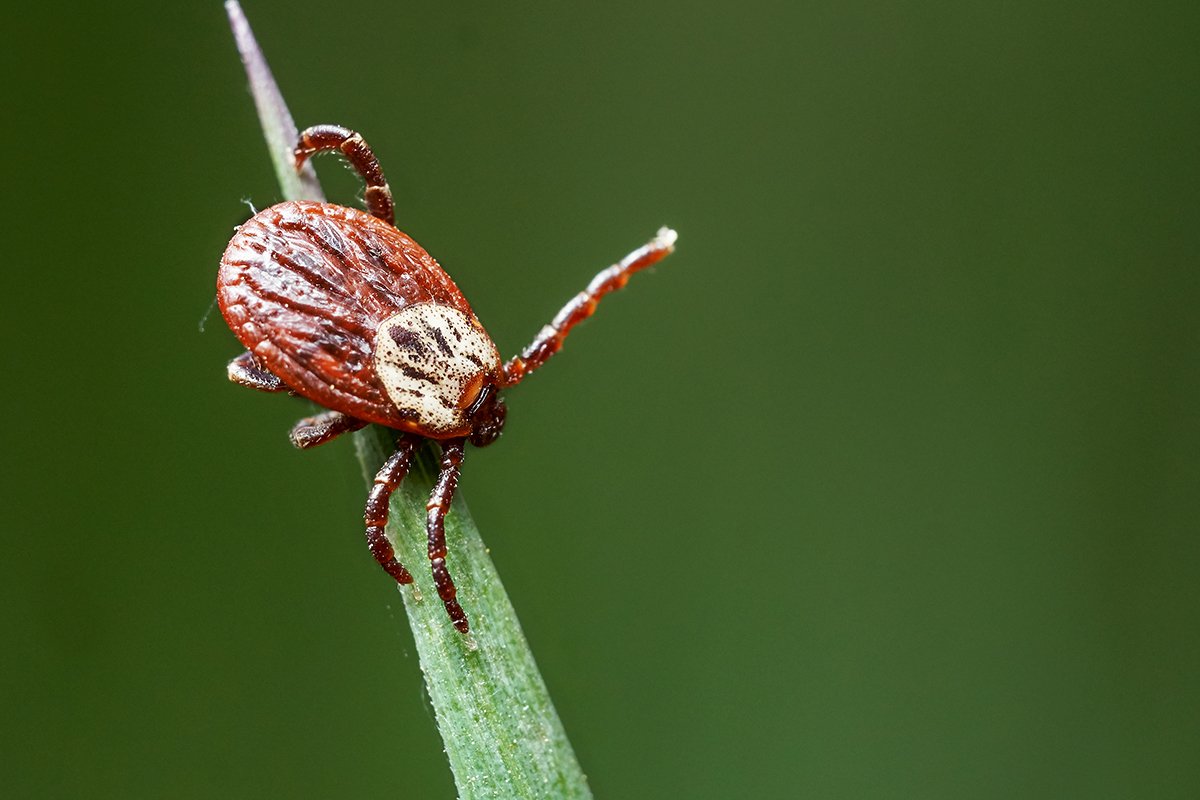There’s a New Tick in Town, Plus How to Be Tick Safe This Summer

As of this spring, an invasive tick species, the Asian longhorned tick, has spread to Illinois. USDA says the species is now known in the following U.S. states and districts:
- Arkansas
- Connecticut
- Delaware
- Georgia
- Illinois
- Indiana
- Kentucky
- Maryland
- Massachusetts
- Missouri
- New Jersey
- New York
- North Carolina
- Ohio
- Rhode Island
- South Carolina
- Pennsylvania
- Tennessee
- Virginia
- West Virginia
- Washington, D.C.
The Asian longhorned tick may have been present in the U.S. as early as 2010, even though researchers first identified it in 2017. Since then, it’s been spreading to more areas in the eastern half of the country.
The CDC says this invasive tick species appears to be less attracted to humans than some other native ticks, like the blacklegged tick. One study cited by the CDC suggests Asian longhorned ticks are “not likely to contribute to the spread of Lyme disease bacteria in the United States,” which is good news. However, another study found that the species can carry and spread other diseases, such as Rocky Mountain spotted fever.
How to Be Tick Safe This Summer
The CDC says ticks prefer “wooded and brushy areas with high grass and leaf litter.” Unfortunately, tick territory can also include almost anywhere outdoors, so it’s best to be proactive, even if you’re not in a wooded area.
The best ways to prevent tick bites include:
- Wearing protective clothing, including long-sleeved shirts, long pants, and socks to minimize exposed skin.
- Using insect repellent, especially those containing DEET, picaridin, IR3535, Oil of Lemon Eucalyptus (OLE), para-menthane-diol (PMD), or 2-undecanone.
- Checking your body, clothing, and gear for ticks after being outdoors, and being thorough about it. (Be sure to check tricky areas on your body, like the hairline, underarms, groin, and behind the knees.)
- Treating clothing, gear, and pets with tick-prevention products before entering tick territory. For clothing and gear, you can consider pre-treating with permethrin, but this substance is “a weak carcinogen” and should be used with caution.
- Cleaning your body after outdoor activities. The CDC’s advice is to shower within two hours of an outdoor activity to wash off any ticks that have hitched a ride on your body but haven’t bitten you yet.
If You Find a Tick
If you find a tick on your body, whether it’s attached or not, get it off as soon as possible—but preferably not by swiping it off and leaving it to bite someone else . . . and definitely not by crushing it, because that can infect you too. You can kill or contain a live tick by putting it in rubbing alcohol, placing it in a sealed bag, wrapping it in tape, or flushing it down a toilet.
If you find a tick that’s attached to your skin, use a pair of tweezers or a tick-removal device to grasp the tick and pull it off (if you’re using a tick-removal device, follow the manufacturer’s instructions). If you’re using tweezers, take care not to twist as you pull, because the mouth parts of the tick could break off and stay attached to your skin.
After removing the tick, the CDC says your next step should be cleaning the area and your hands with soap and water or rubbing alcohol.
Source: https://outdoors.com/theres-a-new-tick-in-town-plus-how-to-be-tick-safe-this-summer/







